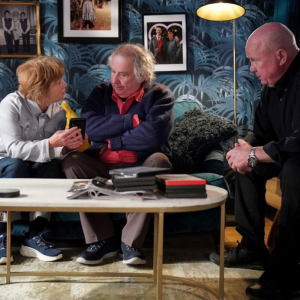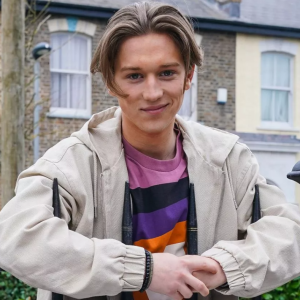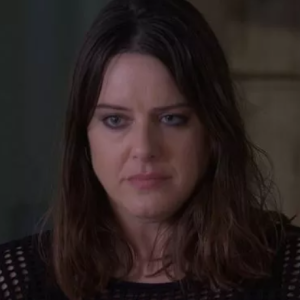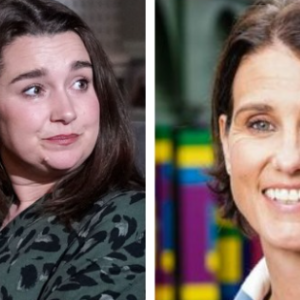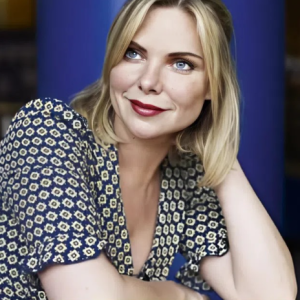In a highly anticipated reunion that has captivated long-time viewers, EastEnders, the iconic British television soap opera, is set to welcome back Zoe Slater, reuniting her with mother Kat Slater after two decades. This pivotal moment sees Jessie Wallace, who portrays the iconic Kat, delve into the intricate history and profound emotional weight of soap opera’s most memorable mother-daughter relationship. For fans, the very mention of Kat and Zoe instantly conjures the dramatic 2001 revelation where Kat, then believed to be Zoe’s older sister, famously declared, “You ain’t my sister, you’re my mum!”
This explosive storyline, a masterclass in dramatic irony and emotional upheaval, remains one of British television’s most iconic soap opera moments, akin to a cultural landmark. Jessie Wallace herself vividly recalls the seismic shift it caused. “It changed my life overnight – nothing can prepare you for that,” she reveals, underscoring the immediate and overwhelming public reaction. The intensity of the storyline propelled both Wallace and her character, Kat, into an unprecedented level of public scrutiny and affection. Yet, within the relentless pace of soap production, there was little room to savour or fully comprehend the historical significance of their work. Wallace recounts, “On a show like EastEnders you do a scene then go straight on to the next one. You have to let it go. Yes, it was a big moment in the storyline but we did it and walked away, not knowing it would explode like it did.” This swift transition from monumental drama to the next day’s schedule is characteristic of the genre, where actors must perform with immediate impact and then move on, often unaware of how deeply their performances will resonate with millions.
The genesis of the Slaters, a family that quickly cemented itself as a vital force in Albert Square, was a unique creative endeavour. Wallace details how the formidable clan of women was born from a series of workshops and improvisational sessions involving actors and the story team, including luminaries like John Yorke, Tony Jordan, and Simon Ashdown. This unconventional approach allowed for an organic development of characters, a ‘creative boot camp’ that laid the groundwork for their collective chemistry and individual complexities. While the foundations of Kat’s tragic past were being subtly laid during these sessions, even Wallace remained unaware of the impending twist until well into her tenure. She recounts the casting process for Zoe, noting that while Brooke Kinsella, who later played Zoe’s friend Kelly Taylor, was initially considered, Michelle Ryan ultimately embodied the role. “Brooke Kinsella had been in the workshop and was up to play Zoe originally but she didn’t look like a Slater. Michelle did, and when she auditioned after the workshops they could see that she was a beautiful person, and actor.” The decision to cast Ryan proved prescient, setting the stage for one of the show’s most enduring and turbulent relationships.
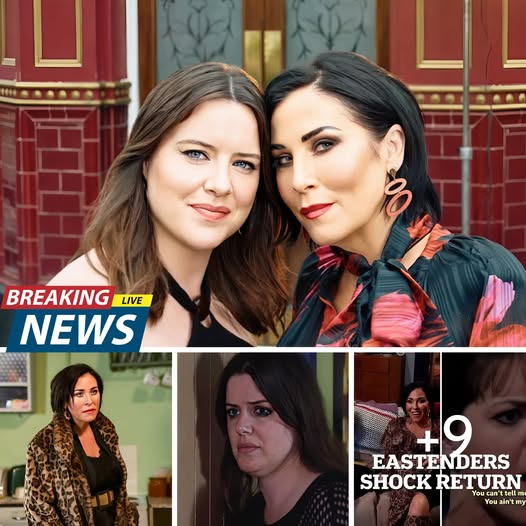
Wallace acknowledges the creative genius behind the reveal, musing, “Maybe they had the story in their heads from the start or maybe they found it on the way, you’d have to ask them.” Regardless of its precise inception, the moment it was unveiled to the actors was electrifying. “When they told me Kat was Zoe’s mum, I was so excited, as was Michelle,” she states. The subsequent ‘two-hander’ episode, focusing almost exclusively on Kat and Zoe, was both “daunting but brilliant” for Wallace. She reflects on her early days, “When I first started, it would take me a week to learn a monologue, so doing a whole episode with one other person was daunting, but the more I did the job, the more it became a craft.” This dedication transformed their on-screen dynamic into a raw, compelling portrayal of trauma and burgeoning connection, forever cementing their place in EastEnders lore.
Zoe and Kat’s deeply complicated dynamic, born from years of deception and a strained acceptance of their true relationship, has been a lingering shadow over Kat’s life. Wallace observes that Kat has been perpetually haunted by this unresolved bond. “The only time Zoe ever called her ‘Mum’ was in her last scene before she left in 2005,” she highlights, emphasizing the enduring emotional chasm between them. Kat’s character, Wallace believes, constantly carries the weight of Zoe’s absence. “I play it that Kat thinks about Zoe all the time. Zoe is out there but Kat doesn’t want to interrupt her life, she knows she’s fighting her own demons. They’ve both been through a lot and I’m hoping she and Kat will be closer this time.” This hope underscores the profound desire for healing that permeates their upcoming reunion, promising a highly charged exploration of their shared past.
The significance of this reunion for EastEnders cannot be overstated. It is not merely a nostalgic callback but a courageous decision to revisit one of the show’s most indelible moments, offering an opportunity to unpack decades of character development shaped by this foundational trauma. The emotional resonance of the on-screen reconciliation was mirrored off-screen, as Wallace and Ryan experienced their own heartfelt reunion after two decades apart. “I burst out crying,” Wallace recalls of their secret dinner with executive producer Ben Wadey and the rest of the Slater family. “When I saw Michelle, I cried – we were all very emotional. It was nostalgic and lovely.” This genuine emotion hints at the powerful chemistry that the duo will once again bring to the screen.
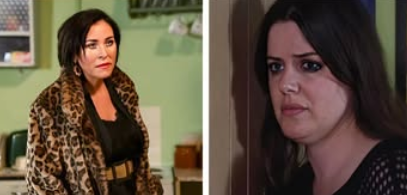
In the world of long-running soap operas, recasting roles is a common practice, with characters like Peter Beale and Ben Mitchell being portrayed by multiple actors over the years. However, Wallace’s firm stance on Zoe’s return was unwavering: it had to be Michelle Ryan. “I said to Ben, ‘It has to be Michelle. It won’t feel right if Zoe is recast.’ I wouldn’t be able to give my best performance. The audience would feel completely conned,” she asserts. This insistence speaks volumes about the deep connection actors form with their roles and, crucially, with their scene partners, particularly in relationships as complex and deeply embedded as Kat and Zoe’s. For Wallace, the authenticity of their reunion hinges entirely on the original actress, ensuring the audience feels the weight of two decades of shared history, not just a new interpretation of a character.
Wallace’s protective instincts towards Ryan, a natural extension of her on-screen maternal role, have only deepened with time. “I love Michelle and have always been protective over her, perhaps that’s natural having played her mum. I’m a mother myself now, which I wasn’t when we worked together before, and I’m very protective over my daughter,” she shares. This personal growth parallels Kat’s own evolution. “I’ve changed and so has Kat. I’ve grown up a lot, and Kat is more responsible now. She’s got three boys and is married,” Wallace notes. Kat, once renowned for her fiery temper and chaotic lifestyle, has matured into a fiercely dedicated parent. “Kat would die for her children, she wasn’t allowed to be a parent when she had Zoe but has become a great mum. It’s one of the qualities I love most about her.” This transformation sets the stage for a compelling new dynamic between mother and daughter, where Kat, now a more grounded figure, can potentially offer the stability Zoe may have long sought.
While Zoe’s reappearance inevitably stirs up painful memories from Kat’s past, it also heralds a period of cautious optimism for her future. Her recent return to landlady duties at the iconic Queen Victoria Public House, a role she last held in 2012, is highly symbolic. “I stepped behind that bar and felt like I’d come home,” Wallace admits, highlighting the deep connection between character and setting. The Queen Vic, often referred to as the beating heart of Albert Square, is more than just a pub; it’s a stage where the most significant dramas unfold. Wallace vividly describes the raised bar, a legacy from the legendary Barbara Windsor’s tenure as Peggy Mitchell, as feeling “like getting on a stage.” Kat’s presence behind the bar signifies a renewed sense of purpose and prominence within the community.

This new chapter promises not only a fresh start for Kat and the broader Slater family but also an assurance of the characteristic “mayhem” that defines them. “This is a fresh start for Kat and the Slaters, although there is mayhem from the off,” Wallace confirms. Since their explosive arrival on Christmas Day in 2000, the Slaters have been synonymous with drama, passion, and an unbreakable family bond. Their return to prominence, especially with Kat at the helm of the Vic and Zoe back in the fold, ensures that Albert Square will once again be the epicentre of gripping storylines, exploring themes of family, forgiveness, and the enduring power of complicated love.
